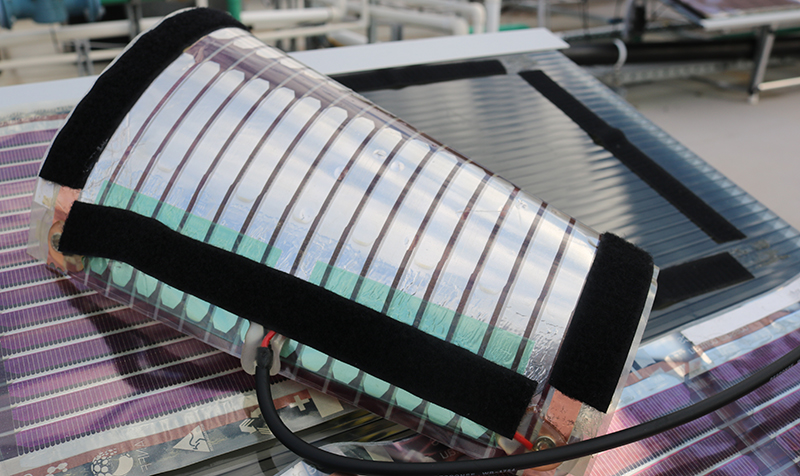Organic PV (OPV) developers continue to advocate for the technology, due to its very low production costs and flexibility, in terms of applications. A team from the University of Newcastle, sees opportunities to apply its OPV flexible modules in an extremely wide range of applications.
The technology, according to Professor Paul Dastoor of the Centre of Organic Electronics (COE) at the University of Newcastle (UON), and creator of Printed Solar, was developed out of the “ability to take tiny particles of mixtures of different polymers and turn them into a suspension in water that we can coat over large areas of surfaces.”
“What we see” says Dastoor, “is the opportunity to coat every building, every roof, in every city, with a coating that will generate power.” The opportunity Dastoor speaks of is in no way embellished. Not only are the solar cells these researchers have developed (from the mixtures of different polymers) extraordinarily cheap to manufacture, but large-scale installations can be made on roofs without any weight re-enforcement. Many roofs simply aren’t able to withstand enough silicon-based panels required to meet consumption needs.
Similarly, the technology’s lightweight nature (approximately 300 times lighter than traditional cells) would enable it to be easily transported in large quantities to emergency situations, relief energy would quite literally be rolled out. Indeed, virtually anything could be coated with what is essentially a printable solar panel membrane.
At less than $10 a square metre and with the Australian National Fabrication Facilities (ANFF) at the COE able to print hundreds of metres per day, this technology represents both the cheapest and fastest form of renewable energy in the world. For this reason CHEP Australia, a Brambles company, partnered with UON researchers to aid in the development and enactment of commercial trials.
Ben Vaughan, a colleague of Professor Dastoor, noted that “projects like this don’t move forward without government support to take them from the lab to the community. We also need forward thinking companies like CHEP, which tapped into their innovation fund to support the install on their roof.”
Another added benefit of this innovation for the Australian market is its reliance on traditional printing presses, an industry facing hard times. “One of the drivers for us” said Dr Vaughan, “is to develop this technology in Australia. We have a print industry in this country which has shrinking margins and this type of functional printing is a potential way to transition the industry to be world leaders in a growth market.”
The success of this large-scale Brambles trial is another boost to printed solar technology, an all-Australian innovation that has the potential to cover great gaps in the renewable energy market.
Author: Blake Matich
This content is protected by copyright and may not be reused. If you want to cooperate with us and would like to reuse some of our content, please contact: editors@pv-magazine.com.








hello
We will like to have a quote on your printed panels
Also sizes we need 300, 600 and 1000 W
Hi, when do estimate these will be available for purchase in Australia? Thanks
Would you be prepared to comment on the concept of utilizing flexible pannels in cable-stayed banners, i.e., crossing highways / major thoroughfares, to collect power along transportation routes and permit direct charging of in-road or road-side charging stations?
While I’m most interested in advancing sustainabile engineering, I’m also interested to participate at any level in related engineering study on this topic.
We want to deal with solar printed flims as shown in the demo
Pls send further details for giving physical demo at mumbai also send few samples
We are interest to use the solar printed panels for our application in Malaysia. Appreciate if you could consider giving us more details of the product and costing.
We are a part of UCSI GROUP OF COMPANIES and this subsidiary is involve in construction industry and would be interested to look at new technology.
Noted and we are interested to know more details on the printed solar cell application